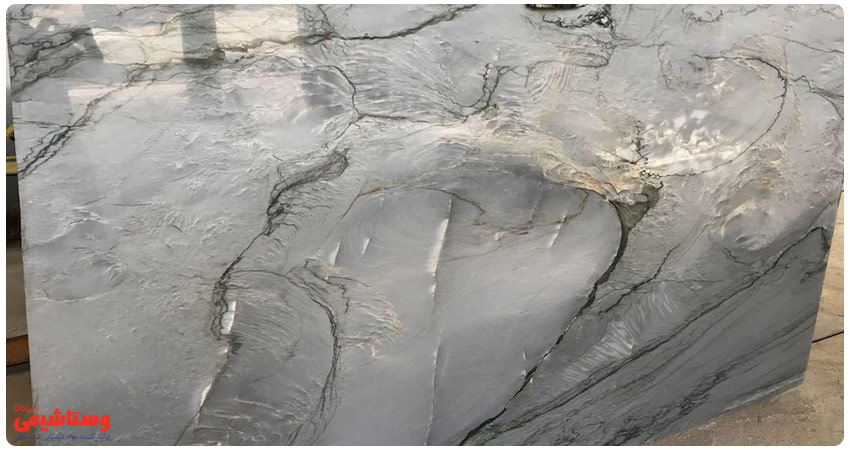Why should you use epoxy glue instead of sand and cement mortar?
Sand and cement are among the heavy materials. If a three-centimeter-thick mortar is to be placed behind each square meter of stone, it will weigh 70-80 kg. It reaches kg, and this is a very heavy weight and puts a lot of pressure on the stone, and because the strength of cement adhesion is not high, it causes the stone to peel off.
Sand and cement mortar and epoxy glue are both common building materials that are used to connect different surfaces. However, each has its own advantages and disadvantages that make them suitable for different applications. In this article, we’ll explore the benefits of using epoxy adhesive instead of sand and cement mortar and help you decide which material is best for your project.
Advantages of epoxy glue
Strength and Durability: Epoxy glue is significantly stronger than sand and cement mortar and can withstand more loads. This makes it an ideal choice for joining surfaces that need to bear a lot of weight, such as cabinet tops, stone floors and metal fittings.
Epoxy glue for connecting surfaces
Resistance to water and chemicals:Epoxy glue is completely waterproof and resistant to chemicals, unlike sand and cement mortar, which is vulnerable to moisture and chemicals. This feature makes it ideal for use in areas exposed to moisture or chemicals, such as bathrooms, kitchens, swimming pools and laboratories.
Strength and Durability: Epoxy adhesive is significantly stronger than other adhesives such as organic adhesives and tape and can withstand heavy loads. This makes it an ideal choice for joining surfaces that need to bear a lot of weight, such as cabinet tops, stone floors and metal fittings.
Epoxy glue in the laboratory
Excellent adhesion: With laboratory tests, epoxy glue sticks to a wide variety of materials, including stone, metal, concrete, plastic, and wood. This makes it a versatile bonding agent that can be used to bond many different types of materials.
Epoxy glue for plastic bonding
Fast tack time: Epoxy glue sets quickly and sets in a few hours. This makes it ideal for projects that need to be completed quickly, such as repairs or installations.
Clean appearance: Epoxy glue creates clean, invisible seams that are perfect for aesthetic applications.
Disadvantages of epoxy glue
Cost: Epoxy glue is significantly more expensive than sand and cement mortar.
It is more difficult to work with: Working with epoxy glue requires more precision and finesse than sand and cement mortar. Mixing and application must be done properly to avoid bubbles or premature hardening.
Toxic and irritating: Epoxy glue contains toxic and irritating chemicals that you should be careful when using it and consider things such as wearing gloves and appropriate clothes, proper ventilation of the workplace, etc.
How to produce epoxy glue
The production of epoxy glue is a complex chemical process that includes several steps. Here we briefly mention the main stages of epoxy glue production:
1. Synthesis of epoxy resin:
The first step is the synthesis of epoxy resin. This is done by a chemical reaction between epichlorohydrin and bisphenol.
Various factors such as the ratio of epichlorohydrin to bisphenol, type of catalyst and reaction conditions affect the properties of epoxy resin such as molecular weight, viscosity and melting point.
2. Hardener production:
Hardener is another ingredient needed to cure epoxy resin. The most common type of hardener is amines.
There are different types of amines with different properties that can be used to produce epoxy adhesives with desired properties.
3. Mixing resin and hardener:
Epoxy resin and hardener are mixed in exact proportion. This is usually done using a mechanical mixer.
The ratio of resin to hardener affects the setting time, strength and other properties of the epoxy adhesive.
4. Additives:
In some cases, additives such as fillers, thinners or colors may be added to the resin and hardener mixture.
Fillers are used to increase the strength and hardness of epoxy glue.
Thinners are used to reduce the viscosity of epoxy glue and make it easier to work with.
Dyes are used to color the epoxy glue.
5. Packaging:
Mixed epoxy glue is packed in suitable containers.
The type of packaging depends on the type of epoxy glue and its application.
6. Cooking:
After mixing, epoxy resin and hardener react chemically and become a hard solid material. This process is called cooking.
The curing time and temperature affect the final properties of the epoxy adhesive.
Conclusion
Due to its strength, durability, resistance to water and chemicals, excellent adhesion and fast setting time, epoxy adhesive is a suitable alternative to sand and cement mortar in many applications. However, due to its higher cost, more difficult handling and toxicity, it may not be suitable for all projects.
Choosing between epoxy adhesive and cement-sand mortar depends on your specific needs. If you are looking for a strong, durable, waterproof adhesive that cures quickly and has a clean appearance, epoxy is the right choice. However, if you are looking for a cheaper and easier to work with option, sand and cement mortar may be a better choice.
Ultimately, the best way to decide which material to use is to consult with an expert in the shop or contractor who can evaluate your specific project and give you the best recommendation.







